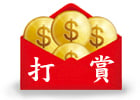這可不是尋常事。大部分工業化國家如今步入衰退,世界還抱一絲希望,期望地球上最活躍的主要經濟體可以抑制全球衰退,然而全球經濟衰退的預警聽上去越來越真實。理由就是:中國儘管有很多儲蓄,有兩萬億美元外匯儲備,但無法迴避2008年年中開始的全球需求下降帶來的影響。儘管有人大肆吹噓中國十億消費者的崛起,但如今中國工業心臟地帶受到的衝擊將揭穿關於中國已經開始過渡到較少依賴出口和投資、較多依賴家庭消費的新增長模式的虛假概念。渣打銀行經濟學家格林(Stephen Green)上月寫道,"我們也想相信這些話,但實際不是這樣的。"他說期望中國的消費拯救世界於衰退是一個白日夢。
以中國為首,整個亞洲都危險地暴露在外部衝擊之下。自九十年代末以來,家庭消費佔GDP的比重就從大約一半下降到35%。另一方面,亞洲(除了日本)產出的出口份額如今超過45%,比1997-1998年亞洲金融危機前夕高大約十個百分點。美國以借債為動力的貪慾與亞洲對自己生產的商品的極小胃口並舉,反映了全球經濟的紊亂。
如果北京要為失衡支付最大份的代價,那不足為奇,理由很簡單:中國的重新平衡實際上會比美國的更艱苦。對美國家庭而言,如今的危機意味著多儲蓄少消費(最近的消費數據顯示這種情況正迅速發生)。然而在中國,以價值來計算,家庭消費僅相當於美國的5%,挑戰在於維持一個主要靠投資和出口驅動的經濟,這意味著要想辦法維持工業生產過剩。北京大學經濟學教授佩蒂斯(Michael Pettis)表示,1929年的美國也發現自己處於類似處境。"20年代的美國有龐大的貿易盈餘,而且擁有當時歷史上最龐大的儲備。美國避開了全球金融危機了嗎?沒有。它是最遭殃的國家。從這個意義上看,恰似今天的中國。"
北京意識到它所陷入的增長陷阱。它在宣布中國第三季度經濟增長9%之後不久公布5900億美元刺激計畫還有什麼別的原因嗎?多數人認為中國經濟自此大幅度放緩。2009年的增長率可能是百分之七點多,而最新的預測加上了嚇人的告誡:"或者會更低"。
北京的刺激方案贏得全球喝采,尤其是因為它顯示了中國領導人不會坐視危機加深。但正如大蕭條之初的華盛頓,政策失誤會讓中國付出沈重代價----特別是如果它們破壞中國經濟比其他主要經濟體更加倚重的全球貿易體系的話。
然而,在格林看來,中國的刺激方案的兩個焦點就是出口和基礎設施,衛生和教育開支儘管被列入重點,但不會得到充分的支持。
要明白社會服務與與家庭消費之間的關係,去中國醫院看看就知道了。病人要預交錢,到錢用完的時候他們就被趕出去,無論治沒治好。根據世界衛生組織數據,中國投入醫療的錢不足GDP的1%,在196個國家的排名中排行第156。同樣地,窮人的孩子不交錢不能上學,而且大多數流動人口沒有任何職業事故保險。家庭設法把可支配收入的大約25%存起來,以防萬一。這不是有益於胡錦濤"和諧社會"的社會契約。
如今的風險在於,可能像大蕭條時代的美國,工人會變成經濟破產的棄兒。北京堅稱保持8%之上的增長率對於吸收數以百萬計從內陸農村湧來的工人至關重要。增長率越是低於這個水平線,就越多工人處於失業狀態。然而儘管決策者竭力鼓動快速增長,卻沒有什麼措施把這些工人變成另一種大軍:有足夠社會保護,從而可以少存錢多花錢的新消費者。
北京目前面臨的挑戰與1989年時十分不同。如今,它必須在全球貿易舞台上保持足夠的協調,以免失去重要的海外市場,同時要告訴中國民眾,快速的增長並非與生俱來的權利。從根本上說,北京必須提供新的社會契約,以社會保障取代出口驅動型增長引擎,鼓勵消費。羅斯福在20世紀30年代在美國進行這項工作,但這項工作花了十年時間。中國領導人會更好過些嗎?在90年代末,時任總理朱�基在眾多鄰國實行貨幣貶值的時候力挺中國貨幣;這個決定讓中國失去一些出口動力,但中國領導人因此獲得承擔全球行動責任的美譽。如今的領導人仍然保住這種聲譽,但鑒於經濟挑戰之巨大,幾乎可以肯定他們的領導力將在2009年受到終極考驗。特別是如果那些悲觀主義者預測正確,中國經濟停頓的話。
Why Beijing Is In A Risky Place
As the factory to the world, China may be the nation most vulnerable to collapsing global demand.
By George Wehrfritz|
NEWSWEEK
Workers clean the statue of former Chinese leader Mao Zedong
Workers are losing factory jobs at the fastest rate in decades. Automakers-having failed to anticipate today's sales slump-are lobbying politicians for bailouts. The stock market is a crash heap, home prices are down by 35 percent or more in many cities and toxic assets have begun to weigh heavily on banks. America in 2008? Try China, where the global economic downturn now looks certain to end the country's 30-year growth boom, posing the greatest leadership challenge to Beijing since pro-democracy demonstrations threatened one-party communist rule back in 1989.
That's not the conventional take on China-yet. But with most industrialized countries now in recession and countries the world over hoping against hope that the planet's most buoyant major economy might somehow dampen the global downturn, it's a forecast that increasingly rings true. The reasoning goes something like this: China, despite its deep pool of savings and $2 trillion in foreign reserves, is unprotected from the fall in global demand that began in earnest in mid-2008. Notwithstanding all the hoopla about the rise of China's billion consumers, the body blow that's now landing in the industrial heartland will debunk the notion that China has already begun transitioning toward a new growth model based less on exports and investment and more on household consumption. "We would love to believe it too, but it just ain't so," wrote Standard Chartered bank's highly respected China economist, Stephen Green, last month. He says expecting Chinese spending to save the world from recession is "a pipe dream."
With China at the vanguard, Asia as a whole stands dangerously exposed to external shock. Since the late 1990s, household consumption as a share of China's GDP has fallen from roughly half to 35 percent. On the flip side, the share of Asia ex-Japan's output devoted to exports is now more than 45 percent, or roughly 10 points higher than it was on the eve of the 1997�98 Asian financial crisis. When juxtaposed with America's debt-driven gluttony, Asia's puny appetite for the goods it produces reflects a global economy that's staggeringly out of whack. "We are where we are because of massive imbalances that policymakers and politicians have allowed to build up over the last decade," argues Stephen Roach, chairman of Morgan Stanley Asia. "Those imbalances were never sustainable, but the longer they went on the more they seduced people. And now we're paying the ultimate price for that seduction."
The tab, in fact, has yet to be tallied, but don't be surprised if Beijing gets stuck with the biggest portion of the bill for the simple reason that China's rebalancing act is actually much tougher than America's. For U.S. households, today's crisis means saving more and consuming less (recent consumption data suggests that is happening quite rapidly). Yet in China, where total household consumption is just 5 percent of America's by value, the challenge is to sustain an economy that's largely investment- and export-driven, which means finding ways to perpetuate industrial overproduction. Michael Pettis, a professor of finance at Peking University, says America found itself in the same bind back in 1929. "The U.S. in the 1920s ran a huge trade surplus and had the largest reserves in history to that point," he says. "So was the U.S. immune to the global crisis? No. It was the country that suffered the most. In that sense it is exactly like China today."
Beijing realizes the growth trap it's in. Why else would it unveil on Nov. 10 a $590 billion stimulus plan-a package nearly as large as Washington's $700 billion financial bailout-just days after it announced that China's economy expanded by 9 percent in the July�September quarter? The consensus view is that China's economy has slowed markedly since then. Year-on-year growth estimates for 2009 are mostly in the 7s, with the latest forecasts adding the scary caveat, "or less." This month the Royal Bank of Scotland said 5 percent growth in China next year couldn't be ruled out. China's economy, which grew by 11.9 percent last year, hasn't dipped below 6 percent annually since 1990.
Beijing's stimulus plan has won plaudits internationally not least because it indicates that Chinese leaders won't stand idly by as the crisis deepens. But just as in Washington at the beginning of the Great Depression, policy miscues could cost China dearly-especially if they undermine the global trading regime that China's economy relies on more heavily than any other major economy in the world. In the early 1930s, America's self-defeating mistake was to cut off world trade, particularly in the Smoot-Hawley Tariff Act, at a time when it was the leading exporter in a world burdened by massive industrial overproduction. Today, China is the lead exporter, the world again faces massive overproduction, and the mistake Beijing must avoid is moving too hard to sell more manufactured exports at the risk of flooding an already weak market, and triggering a protectionist backlash. That will only push the global market toward deflation-the downward spiral of falling prices leading to falling demand, as stressed consumers wait for even better bargains.
The doubts about China's stimulus plan arise in part because it's all broad strokes with no fine print. Conceptually, however, it seems intended to split the difference between promoting consumption at home, and export sales. It includes commitments to fund rural infrastructure, boost social spending on health and education, and mount an "economic housing" scheme for migrant workers in major cities-all of which, if implemented, would raise household spending over time. But it also contains perks for heavy industry, value-added tax cuts for the export sector and lending provisions that will channel bank funding to state enterprises engaged in road and rail construction and away from private companies. "The two focuses are definitely exports and infrastructure. That's what we're getting from everything we're picking up," says Green. "And that the health and education spending, although it has been listed as one of the eight priorities, is not going to be [well] supported." Economists estimate that only a quarter of the $590 billion is new money as opposed to previously announced spending, future tax cuts and unfunded mandates passed down to local governments. There's reason to expect that much of the promised social spending-and the consumer empowerment it represents-may not materialize. One warning signal is that Beijing has entrusted much of the safety net stuff to the provinces, which historically have put a low priority on building schools, unless the order to do so comes with earmarked funding from Beijing. One new concern: local tax revenues are shrinking due to the economic downturn. Roach says investment in the social safety net would "reduce the precautionary saving that is inhibiting broad-based consumption growth across the nations [of Asia]," though he adds: "China has from time to time flirted with that, but they really have dragged their feet."
To understand the linkage between social services and household consumption, visit a Chinese hospital. At check-in, patients are required to deposit money up-front, and when that funding runs dry they're tossed out onto the street, healthy or not. According to the World Health Organization, China spends less than 1 percent of its GDP on health care, which ranks it 156th out of 196 nations the U.N. agency tracks. Likewise, poor kids can't attend school without paying fees, and most migrants are uninsured against job-site accidents at any price. Families cope by saving an estimated 25 percent of their disposable income, just in case.
That isn't a social contract conducive to the "harmonious society" President Hu Jintao has advocated since 2006, or so concludes a new report co-produced by the United Nations Development Program and the China Institute for Reform and Development. It calls on China to overhaul its social-welfare system to provide universal basic health care, education, unemployment and retirement benefits for the country's 1.3 billion people. It stresses the need to vest forgotten segments of society including farmers, migrant workers and the poor. And it claims that such expenditures-which it estimates would cost $55 billion a year-actually offer a bigger bang for the buck than would the construction of new roads, railways and bridges.
The risk today (and it's one that's already materializing in a mounting exodus from shuttered factories in Guangdong province) is that these workers could, like the boxcar-hopping hobos of America's Depression era, become the flotsam and jetsam of the economic bust. Almost since China's reforms began three decades ago, Beijing insisted that sustaining economic growth rates above 8 percent was paramount to employing the millions of workers pouring in from inland villages. The further growth drops below that level, the higher the percentage of an estimated 15 million workers entering the labor force each year lands in the ranks of the unemployed. Yet even as policymakers stoked fast growth with every means at their disposal, little was done to transform these workers into foot soldiers of a different sort: new consumers with sufficient social protections to save less and spend more.
The prescription for change has been obvious since the late 1990s. It includes balanced growth between booming east and lagging west; efforts to narrow the yawning income gap between China's superrich and everyone else; and policies that channel the massive earnings logged by the state-owned conglomerates that dominate China Inc. back into government coffers to fund social spending. Yet campaigns with names like Go West meant to spur investment in the hinterland never amounted to more than propaganda exercises, and a long-mulled plan for the government to charge state companies dividend on their huge profits remains a small-scale experiment. In October, Standard Chartered noted a "gulf between aspirations and actual policies" illustrated by Beijing's long-standing bias toward investment and exports, and support for "state-protected oligopolies." Pettis argues that Beijing's persistent mercantilism has prepared it for the wrong crisis-specifically, an external debt shock akin to the one that ravaged Asia in 1997-98, against which China's huge savings and foreign reserve pools would make it "superbly protected." Yet as with America in 1929, China is the nation most exposed in the world to a collapse in global demand today.
As such, Beijing finds itself in a fix as 2008 winds to an ignominious close. Export promotion offers a viable short-term means of keeping the factories of China running-yet grabbing more market share amid a global downturn is the surest way to incite protectionism. During the recent gathering of G20 leaders in Washington, much public emphasis was placed on shoring up the global financial architecture and defending free trade. Yet former New Zealand prime minister Mike Moore, who headed the World Trade Organization from 1999 to 2002, believes the backroom talks focused on the imperative that Asia not try to export its way out of today's crisis. It was "the elephant in the room; how China, and to a lesser extent India and the Southeast Asians, must become consuming countries," he says. "It's overwhelmingly in [their] interest to become a lot less reliant on exports, and it also does right by the people they represent. Not to do it could trigger something that's very, very unpleasant." Global trade slumped 70 percent in the 1930s, and any return to the virulent economic nationalism of that era "would turn crisis into catastrophe," warns Moore.
That presents Beijing with a leadership challenge very different from the one it confronted with tanks and soldiers in 1989. Today, it must work to maintain enough harmony in the global trade arena so as not to lose access to vital overseas markets, while telling the Chinese people that fast growth isn't their birthright. In essence, Beijing must offer a new social contract in which consumption bolstered with a social safety net replaces the export-driven growth engine that has powered China's economy for 30 years. FDR did that in America in the 1930s, but it took a decade. Might China's leaders fare any better? In the late 1990s, then Premier Zhu Rongji refrained from devaluing China's currency when many of its neighbors did so; the decision lost China some export momentum but gained its leadership a reputation for responsible global action. Today's leaders have maintained that reputation, but given the enormity of the economic challenges at hand, the only safe bet is that their helmsmanship will be tested to the extreme in 2009. Especially if the pessimists are correct and China's economy grinds to a halt.
来源:美國新聞週刊
短网址: 版權所有,任何形式轉載需本站授權許可。 嚴禁建立鏡像網站。
【誠徵榮譽會員】溪流能夠匯成大海,小善可以成就大愛。我們向全球華人誠意徵集萬名榮譽會員:每位榮譽會員每年只需支付一份訂閱費用,成為《看中國》網站的榮譽會員,就可以助力我們突破審查與封鎖,向至少10000位中國大陸同胞奉上獨立真實的關鍵資訊, 在危難時刻向他們發出預警,救他們於大瘟疫與其它社會危難之中。









